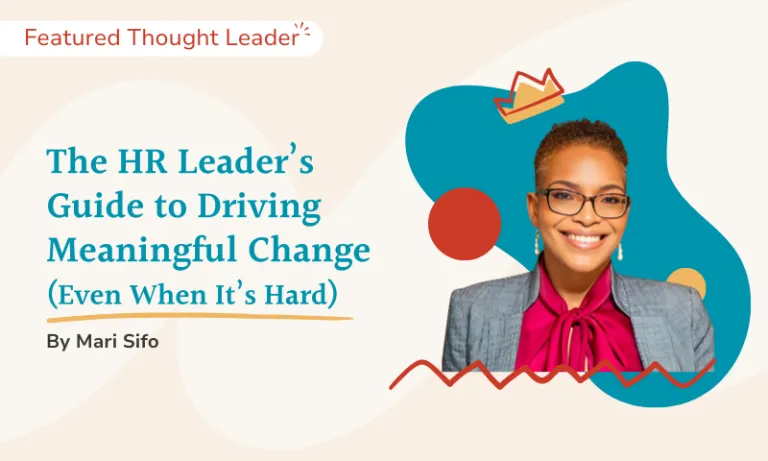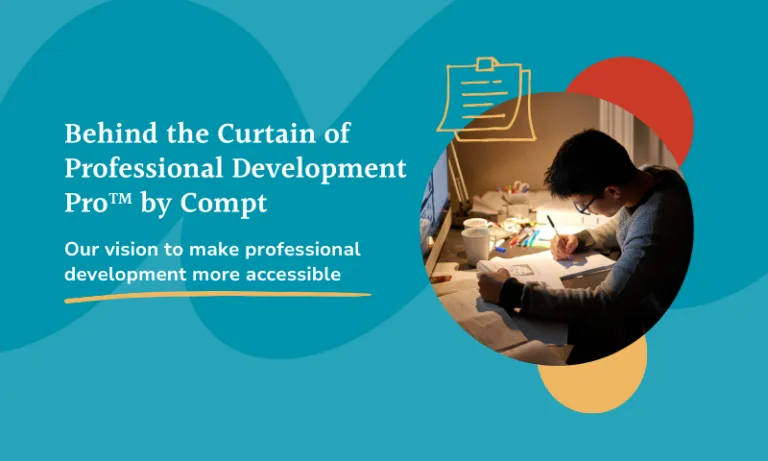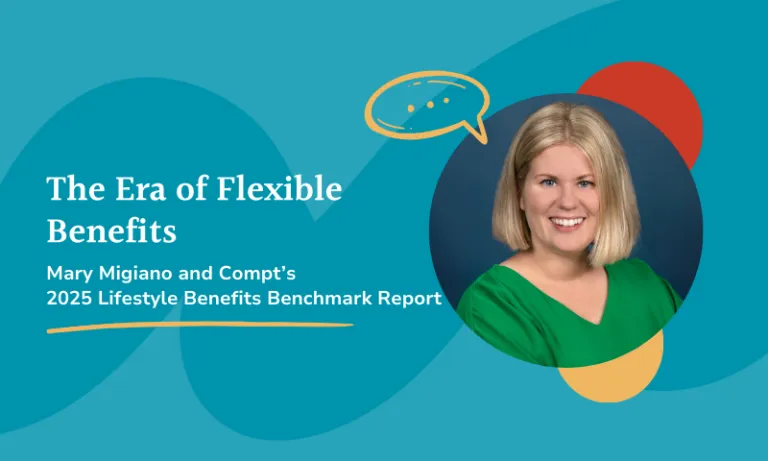Fostering inclusivity in today’s diverse workforce is critical to ensuring that your employees feel valued, allowing them to contribute their best towards your business goals. An inclusive environment creates equality within an organization, which attracts talented employees.
While there are many efforts towards disability-inclusive workplaces, there are still gaps. In the United States, the Bureau of Labor Statistics reported the unemployment rate for people with disabilities at 7.2% in 2023, approximately double the rate for those without disabilities (3.5%). The employment-population ratio for people with a disability is currently 22.5%, meaning 22.5% of the working-age population with disabilities are employed.
Among those who are employed (or who are actively seeking employment), there are other challenges. Discrimination, both conscious and unconscious, is a significant barrier to employment for people with disabilities. In a recent survey, 1 in 4 respondents told Indeed they faced discrimination in the job interview process. And one-third said they “do not feel comfortable disclosing their disability.”
Building an inclusive workplace for those with disabilities requires a cultural shift toward understanding and acceptance. It’s something that will pay off in the long run, not only for the individual employee, but for the organization as a whole.
Why Is It Important to Build a Disability-Inclusive Workplace

According to the CDC’s most recent data, 70 million American adults report having a disability. That’s 1 in every 4.
Disability inclusion ensures nobody with a disability is discriminated against. Instead, they’re celebrated for who they are and what they achieve. In the workplace, disability inclusion means being careful not to set those with disabilities at a disadvantage.
The reason this matters: “disability” ≠ “inability.” While the number of people with disabilities is quite high, only 7.24 million disabled workers received SSDI benefits in November 2024, the most recent reported data. These are the individuals who have been assessed as having disabilities severe enough to prevent substantial gainful activity.
For the other 60 or so million, having a disability doesn’t mean they can’t work. It just means they may need certain accommodations or adjustments to be able to perform their job duties effectively. In a survey run by the American College of Healthcare Executives, nearly all managers (92%) who are aware that one or more of their employees have a disability reported that these individuals perform the same as or better than their peers without disabilities.
And by creating a workplace that’s inclusive, you can tap into the skills of this often-overlooked segment of the talent market, create a more diverse and dynamic workforce, and improve overall productivity.
From a legal standpoint, it’s also a must-have. The Americans with Disabilities Act (ADA) and other related laws explicitly prohibit discrimination against qualified individuals with disabilities in all employment practices. And they require companies with 15 or more employees to provide reasonable accommodations to qualified employees with disabilities.on. You’ll also comply with the discrimination laws against disabled persons, saving you expensive lawsuits.
Steps Towards Providing Disability Inclusion in the Workplace

Disability-focused strategies continue to come into focus as more employers commit to disability-inclusive hiring. Here are steps to take to promote disability inclusion in your workplace.
1. Make it Easy for Disabled Applicants to Apply for Your Jobs
UN statistics reveal a higher unemployment rate for persons living with disabilities in developed nations than those without. Beyond discrimination in their sexual orientation, race, and status, disabled persons face more barriers, hence the need to create a level field for job application processes.
The first step to disability inclusion at the workplace is identifying the barriers that may block disabled applicants from applying for jobs at your company. These barriers include
- Advertisements: Do you have inclusive job postings? Do they portray that you support people with disabilities?
- Applications: Is the application format accessible to people with disabilities who have unique requirements?
- Interviews and assessments: Do you find out if the candidates have accessibility requirements, and are your activities suitable for all groups of people?
- Onboarding process: Do you have a process implementing the adjustments required to hire disabled people?
Upon evaluating the above, look at each through an inclusivity lens and make necessary adjustments to ensure disability inclusion. These include writing the job descriptions in plain language, using application formats like videos, removing aptitude tests, and providing access to the interview questions in advance.
2. Have a Comprehensive Understanding of Disabilities and Disability Etiquette
Understanding disability etiquette means learning about the lived experiences of people with disabilities and finding out about the other organizations that are within the disabled people community. By supporting these organizations, employers will spread awareness to others and act as a resource for educating themselves and colleagues.
3. Promote Company-Wide Education
Company-wide training and education for managers, leaders, and employees on disability awareness and workplace accommodations is critical to creating a more inclusive environment. The training should be in-depth and extensive, including handling requested accommodations and addressing the stigma around employees with disabilities. This way, it will be easier to create a comfortable environment where people with disabilities within the organization can voice their needs and concerns.
4. Create Safe Spaces and Provide Physical Accessibility
Most disabled workers have hidden or visible intellectual or physical disabilities but never feel safe to disclose them, hence the need to pay close attention to how you discuss disability as a company. By normalizing and openly discussing disabilities, avoiding specific phrases, and aligning your messages to the social rather than medical model of disability, your employees may find a safe space to talk about it, enabling you to know what to adjust to make their stay comfortable.
Providing physical access to your workplace is another critical way to support employees living with disabilities.
For instance, consider voice-to-text software or a bigger monitor for a partially-sighted employee, wheelchair-accessible restrooms, and ramps for persons on wheelchairs in your plans for developing an inclusive team and culture.
To sustain the above commitment, have a straightforward accommodation process and statement for candidates with disabilities to request the accommodations they need. You can also share this internally with your employees in case they need it for their current disability or one that occurs in their future course of work.
For maximum effectiveness, your accommodation statement should feature two contact methods, phone and email, for accessibility purposes, and the response on the next steps should be at least within 24 hours.
5. Leverage Technology for Inclusive Workplaces
Diversity and inclusion at the workplace mean that all people, regardless of who they are and what they do, feel supported, represented, valued, and equally empowered in all areas at work. Through workplace learning in an increasingly remote and hybrid setting, it is worth accommodating all people in technology use, regardless of their limitations.
When developing new websites and services, build accessibility into the design process, and involve employees with disabilities in the testing and design phases, it is much easier to design an accessible website than to fix the gaps later. Undergoing an accessibility audit is also helpful filling all the gaps around web information used by people with disabilities.
6. Offer Remote Work and Flexible Hours

Post-COVID, most employers are transitioning back to the office, and 7 in 10 said they’d be doubling down on their RTO policies in 2025. However, to accommodate people with disabilities at your workplace, consider flexible hours such as start and finish times, the option to work from home, and taking more breaks. Here are some benefits of offering the option to work remotely and flexible hours.
- It allows employees time to care for their health limitations through weekly appointments or to manage chronic pain.
- It increases employee productivity.
- It reduces stress by providing a better work-life balance.
- It makes it easier to attract, hire, and retain employees.
It’s important to discuss flexible employee time requests to address their concerns better. Afterward, decide whether to grant the request without discriminating against them.
7. Develop Supportive Policies
Developing supportive policies to protect disabled persons in your organization is critical. Start by incorporating disability-inclusive language in your policy statements. This means including the words “people with disabilities” and “disability” in your policies and affirming them in your commitment to equal opportunities for these groups of people. Also, list your company’s accommodation with the equal employment opportunity statement and put it at the bottom of your job descriptions so everyone can see it.
Offering benefits for disabled employees is also crucial. Your policies should address leave policies, healthcare benefits, and fringe benefits.
8. Provide Career Development Opportunities
Providing inclusive career development opportunities starts by hiring people with disabilities. You can accomplish this through the blind hiring program, eliminating biases around disability recruitment. If a person with a disability makes it to the shortlist, they will be there on merit, and depending on the disability, the recruiter does not necessarily have to reveal that the candidate is disabled to the hiring team until when making the hiring decision, during which they can discuss the disability in question and provide necessary accommodations.
Often, employees with disabilities get stuck at entry-level or learner positions because employers provide them with little to no opportunity to climb their career ladders.
You can build a disability-inclusive workplace by assigning mentors to assist in career or professional development, identifying skills gaps, and encouraging persons living with disabilities to apply for promotions.
9. Establish Open Communication
After moving through the above steps to build a disability-inclusive workplace, you must provide a space for your employees to give feedback and connect with others with disabilities.
The employees should be able to identify the barriers and concerns to inclusion and, without fear, communicate to employers, confidentially or anonymously.
Another alternative to getting feedback from your disabled employees is through the disability-focused Employee Resource Group (ERG). Through ERGs, these employees can network, address common concerns and issues, and get support from others sharing similar experiences and backgrounds.
Finally, disability inclusion is a continuous process, requiring you to make changes over time to accommodate employee needs as they come. Through employee feedback, monitoring, and evaluation, you will be at par with the trends to improve your strategies.
It’s time to make disability inclusion a priority

Employers can do a lot to ensure an inclusive workplace, from training their current workforce to accommodating their disabled employees. These steps require additional work and a willingness to implement specific policies and practices that impact the organization and community members. If the company follows through, it will result in a happy and loyal team, improved productivity, and a better brand image.
About the Author

David Gevorkian started Be Accessible because of his passion for website accessibility and ADA compliance. He spent much of his career working for financial institutions creating websites and mobile applications. He earned his Master’s in Business Administration from Salve Regina University in Rhode Island. David is an advocate for creating web interfaces usable by all people. He enjoys recording music and playing soccer with friends.
Originally published in 2023, this post has been recently updated for clarity and relevance for our readers.





